Stir-fried cauliflower, a dish that seems deceptively simple, holds within it the potential to be a culinary masterpiece. When executed with precision, it transforms a humble vegetable into a symphony of textures and flavors—crispy edges, tender interiors, and a medley of savory, spicy, and aromatic notes. Yet, achieving this balance requires more than just tossing cauliflower into a hot pan. It demands an understanding of heat control, ingredient synergy, and the alchemy of seasoning. This article delves into the nuances of creating stir-fried cauliflower that not only tantalizes the taste buds but also elevates the vegetable to a star ingredient.

The Foundation: Selecting and Preparing Cauliflower
The journey to perfect stir-fried cauliflower begins at the grocery store or farmers’ market. Opt for a firm, heavy head with tightly packed florets and vibrant green leaves. Avoid specimens with brown spots or a soft texture, as these indicate age or mishandling. Once home, trim the leaves and core, then break the cauliflower into bite-sized florets. Uniformity is key here; inconsistent sizes lead to uneven cooking. Smaller florets (about 1.5 inches in diameter) cook faster and develop more surface area for caramelization, while larger pieces may remain underdone or soggy.
After cutting, rinse the florets under cold water to remove dirt or pests. However, avoid soaking, as cauliflower absorbs moisture like a sponge, which can lead to steaming instead of searing during cooking. Pat the florets dry thoroughly with a clean kitchen towel or paper towels. Excess moisture is the enemy of crispiness—it lowers the pan’s temperature upon contact and prevents browning.
The Science of Stir-Frying: Heat, Oil, and Timing
Stir-frying is a high-heat, quick-cooking method that originated in China over a thousand years ago. Its purpose is twofold: to preserve the freshness and nutrients of ingredients while developing complex flavors through caramelization and the Maillard reaction. For cauliflower, this technique is ideal because it allows the vegetable to soften slightly while achieving a golden, slightly charred exterior.
The Wok or Skillet: A carbon-steel wok is traditional and excels at distributing heat evenly, but a large cast-iron or stainless-steel skillet works well too. Ensure the pan is wide enough to accommodate the cauliflower in a single layer without overcrowding, which would trap steam and soften the florets instead of searing them.
The Oil: Use an oil with a high smoke point, such as peanut, grapeseed, or avocado oil. These oils can withstand the intense heat required for stir-frying without burning. Avoid olive oil, which has a low smoke point and can impart a bitter taste when overheated.
The Heat: Preheat the pan over medium-high to high heat until it’s nearly smoking. A drop of water should evaporate instantly upon contact. This initial searing step is critical for creating texture.
Aromatics and Flavor Base: Building Depth
Stir-fried cauliflower shines when paired with aromatics that layer complexity into the dish. Garlic, ginger, and scallions are classic choices, but don’t shy away from experimenting with shallots, lemongrass, or even fermented ingredients like black bean sauce.
Garlic and Ginger: Mince or slice these ingredients finely to release their pungent oils. Add them to the hot oil after the cauliflower has seared slightly. The residual heat will gently cook the aromatics, mellowing their sharpness while infusing the oil with fragrance.
Chili Flakes or Fresh Chilies: For heat, add dried chili flakes early in the cooking process or toss in fresh birds-eye chilies during the final moments. The latter retains their vibrant color and fresh spiciness.
Soy Sauce and Oyster Sauce: These umami-rich liquids add saltiness and depth. Use them sparingly to avoid oversaturating the cauliflower. A touch of rice vinegar or lime juice at the end can brighten the dish and balance the richness.
Cooking Technique: From Sear to Finish
-
Sear the Cauliflower: Add a generous drizzle of oil to the hot pan, then arrange the cauliflower in a single layer. Let it cook undisturbed for 2–3 minutes until the undersides develop a golden-brown crust. Toss or stir gently to flip the florets, ensuring even browning.
-
Steam Lightly (Optional): If you prefer softer cauliflower, add a splash of water, stock, or white wine to the pan and cover it briefly. The steam generated will soften the vegetable while retaining some crispness. Remove the lid quickly to evaporate any remaining liquid.
-
Incorporate Aromatics and Seasonings: Push the cauliflower to one side of the pan and add the garlic, ginger, and chilies to the cleared space. Stir briefly until fragrant, then mix everything together.
-
Finish with Sauce and Garnishes: Drizzle soy sauce, oyster sauce, or a mixture of both over the cauliflower. Toss to coat evenly. For a glossy finish, swirl in a teaspoon of sesame oil just before serving. Garnish with sliced scallions, toasted sesame seeds, or fresh cilantro.
Variations and Creative Twists
Stir-fried cauliflower’s beauty lies in its adaptability. Here are some global inspirations to expand your repertoire:
Spicy Sichuan-Style: Toss in Sichuan peppercorns, doubanjiang (fermented chili bean paste), and a splash of black vinegar. Top with crushed peanuts and chopped cilantro.
Indian-Spiced Cauliflower: Add turmeric, cumin seeds, mustard seeds, and garam masala to the oil before searing the cauliflower. Finish with fresh grated coconut and lime wedges.
Mediterranean Flair: Incorporate sun-dried tomatoes, Kalamata olives, capers, and a sprinkle of feta cheese. Drizzle with olive oil and garnish with parsley.
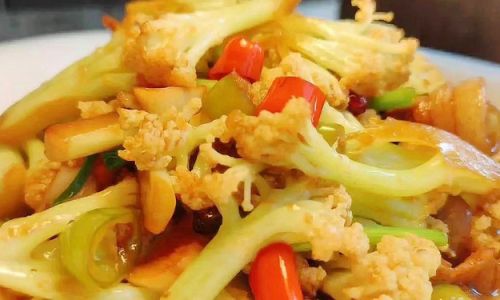
Vegan “Cheesy” Cauliflower: After cooking, toss the florets with nutritional yeast, smoked paprika, and a pinch of garlic powder for a dairy-free cheesy kick.
Troubleshooting Common Pitfalls
Soggy Cauliflower: This often results from overcrowding the pan or not drying the florets sufficiently. Cook in batches if needed, and ensure the pan is hot enough to evaporate moisture quickly.
Burnt Aromatics: Garlic and ginger burn easily. Add them to the pan only after the cauliflower has seared, and keep the heat medium-high to prevent scorching.
Bland Flavor: Stir-fried dishes rely on layered seasoning. Taste and adjust as you cook, adding a pinch of salt, a squeeze of lemon, or a dash of soy sauce to heighten the flavors.
Uneven Cooking: Cut florets uniformly and avoid adding cold ingredients (like raw garlic) directly to the pan, as they can lower the temperature and disrupt searing.
Serving Suggestions and Pairings
Stir-fried cauliflower is a versatile side dish that complements a wide range of proteins and grains. Serve it alongside:
- Grilled Chicken or Tofu: The smokiness of grilled proteins pairs beautifully with the cauliflower’s char.
- Fried Rice or Noodles: Incorporate the cauliflower into a larger stir-fry for added texture and nutrition.
- Crispy Duck or Roasted Pork: The richness of the meat contrasts with the vegetable’s light crispness.
- As a Standalone Meal: Toss with cooked quinoa, chickpeas, and a dollop of Greek yogurt for a hearty vegetarian bowl.
The Role of Texture and Temperature
Achieving the ideal texture in stir-fried cauliflower is a delicate dance. The florets should be tender enough to pierce with a fork but still retain a slight bite. Overcooking renders them mushy, while undercooking leaves them fibrous and raw-tasting. To test doneness, remove a floret from the pan and taste it—it should offer minimal resistance when bitten.
Temperature also plays a role in flavor perception. Serving the dish immediately preserves its contrasting textures and vibrant flavors. Letting it sit for too long can soften the cauliflower and dull the seasonings.
Advanced Techniques for Enthusiasts
For those seeking to elevate their stir-frying game, consider these techniques:
Dry-Frying (Gān Biān): A Sichuan technique where cauliflower is par-cooked in a dry wok over high heat before stir-frying. This removes excess moisture and concentrates flavor.
Velveting: Though traditionally used for meats, a quick marinade in cornstarch and baking soda can tenderize cauliflower and create a silken texture. Rinse the marinade off before stir-frying to prevent stickiness.
Double-Frying: Blanch the cauliflower in boiling water, then shock it in ice water. Drain thoroughly, pat dry, and stir-fry. This method ensures even cooking and a crispier finish.
The Health Perspective: Nutrition Without Sacrifice
Cauliflower is a nutritional powerhouse, rich in fiber, vitamins C and K, and antioxidants. Stir-frying preserves more nutrients than boiling or steaming, as the high heat and minimal cooking time reduce vitamin loss. Additionally, the technique requires little oil, making it a healthier alternative to deep-frying.
For those monitoring their sodium intake, opt for low-sodium soy sauce or tamari, and enhance flavor with fresh herbs, citrus, or a pinch of MSG (monosodium glutamate), which amplifies umami without added salt.
Conclusion: The Joy of Imperfection
Stir-fried cauliflower is a dish that rewards patience and practice. Each attempt teaches you something new—the nuances of heat, the transformative power of seasoning, and the joy of turning a simple vegetable into something extraordinary. Don’t fear the occasional burnt garlic or uneven sear; these “mistakes” often lead to breakthroughs in flavor.
As you experiment, remember that cooking is an art, not a science. Trust your instincts, taste frequently, and adapt recipes to suit your palate. Whether you prefer your cauliflower fiery and bold or subtle and aromatic, the key lies in balancing technique with creativity. So grab your wok, heat the pan, and let the sizzle begin—your journey to stir-fried cauliflower perfection awaits.
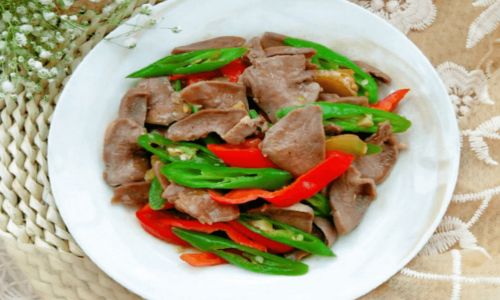
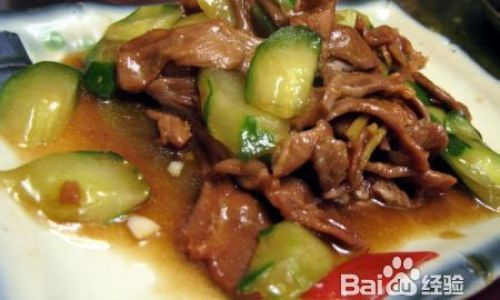
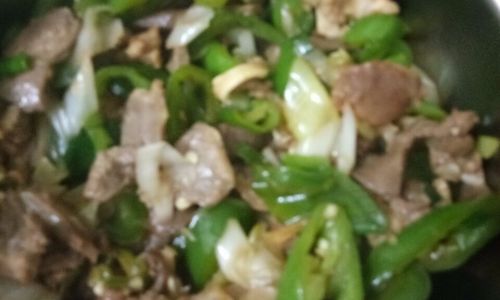
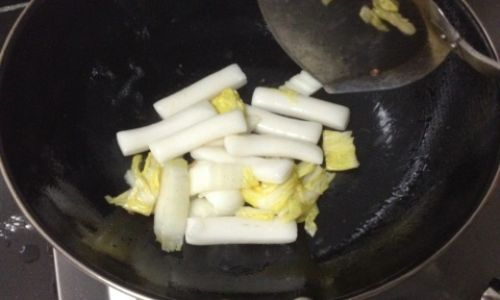

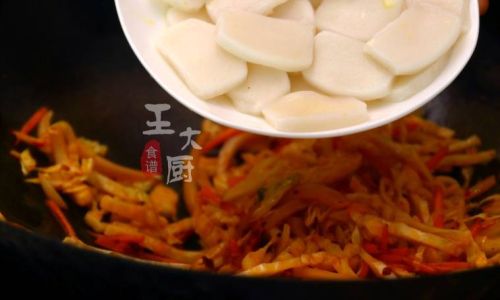
0 comments